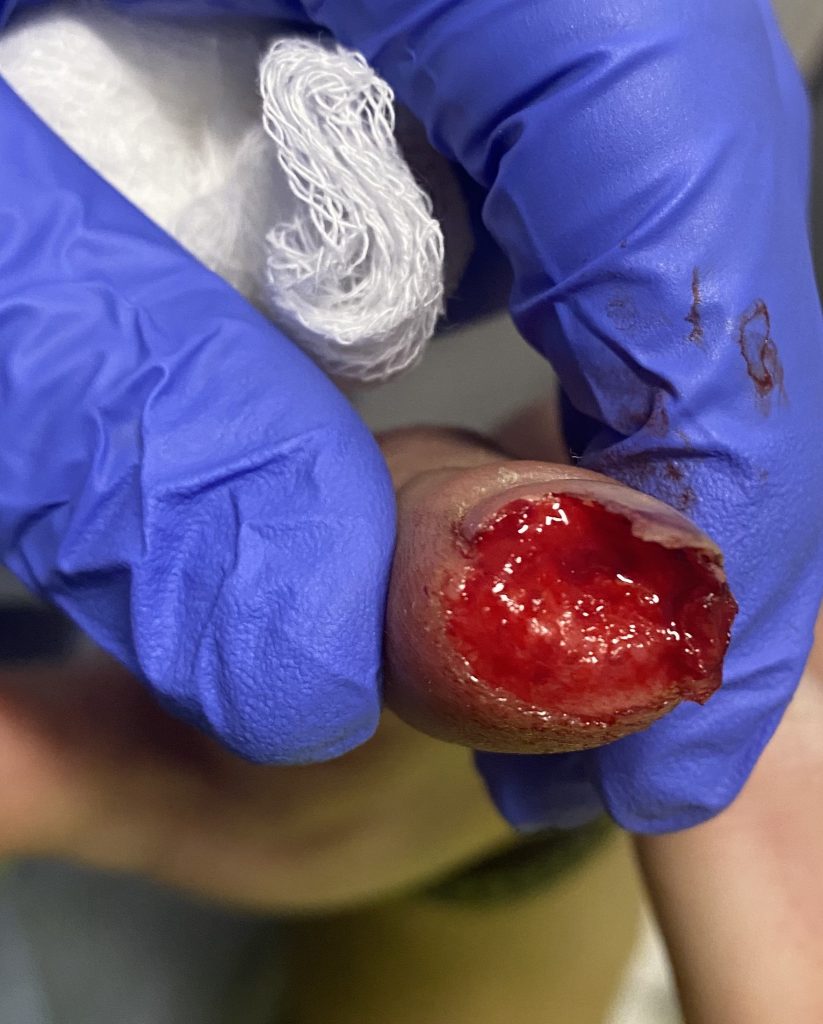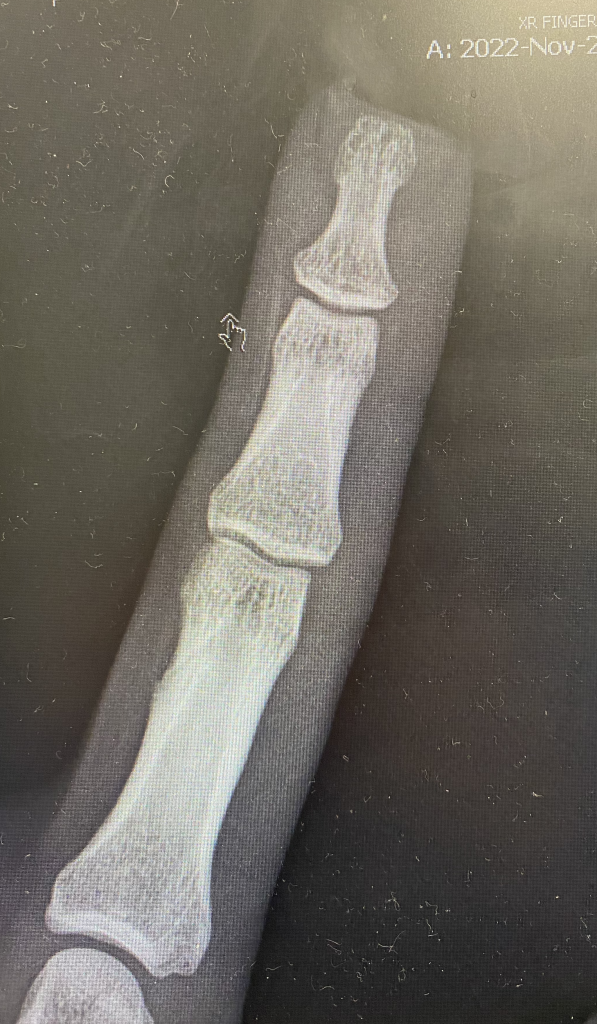Finger tip amputation with no exposed bone
History:
A 33-year-old right hand dominant male with no significant past medical history presents to the emergency department after he accidentally amputating the distal aspect of his right index finger while using a new saw at work approximately three hours prior to arrival. He smokes one pack per day. He is not up to date on tetanus immunizations. His main complaint is hand pain and he is concerned about returning to work as soon as possible.

Figure 1. Distal finger amputation, note jagged nail plate

Figure 2. Distal finger amputation

Figure 3. Distal index finger amputation, appreciate that no bone or tendon is exposed
Findings:
On exam: Distal tip amputation with no exposed bone, he is able to flex and extend his DIPJ (intact flexor digitorum profundus and extensor mechanism). The amputation is across the distal aspect of the nail plate and bed, however nail fold is intact. Wound is not bleeding with no foreign bodies. X-ray does not show any foreign bodies or distal phalanx fractures.

Figure 4. AP x-ray shows no bony injury.
![]()
![]()

Figure 5. Lateral xray shows no bony injury.
Diagnosis:
Right index distal fingertip amputation
Differential Diagnoses:
Workup Required:
Prior vaccinations including tetanus was reviewed. R/O foreign bodies and any nerve or motor deficits. Imaging of both the hand and amputated finger was required. Social work consult was also advised to assist with support while on medical leave given his concern with work.
Plan:
In ED: Washout with saline, coverage of imminently exposed bone, and weekly semi-occlusive dressing
Expertise Needed:
Treatment:
5cc of 1% lidocaine without epinephrine was injected at the volar base of digit and across the dorsum for a digital nerve block. A tourniquet was then placed using a Penrose and Kelly clamp. Irrigation using approximately 250 cc of saline was completed ensuring no visible bone or tendon. The jagged edge of the nail plate was cut using iris scissors. After adequate hemostasis, two single deep interrupted sutures using 3-0 chromic gut were utilized to bring volar tissue over imminently exposed bone, the suture was tacked through the nail plate. Given intact nail fold and no underlying injury to the remaining nail bed, there was no need for nail plate removal. A semi-occlusive dressing using Tegaderm was placed over the distal finger together with a protective fingertip splint. Patient was informed that dressing should be changed weekly for one month. Patient was informed to stop smoking and referred to a cessation program. Patient was prescribed one week of 250mg q6hr of Cephelaxin for one week and was to follow up in one week and to call back sooner if he developed any signs of infection.

Figure 6. Chromic sutures approximating volar tissue dorsally over imminently exposed bone

Figure 7. Semi-occlusive dressing on the distal aspect of the finger tip
Follow Up:
The patient followed up in two weeks and was found to be progressing appropriately with no signs of infection. Patient informed to continue moist dressing and a protective splint.

Figure 9. 2 week post injury and repair

Figure 8. Distal finger after two weeks of occlusive dressings

Figure 10. 2 months after repair with almost complete resolution of wound

Figure 11. 2 months after repair with almost complete resolution of the wound

